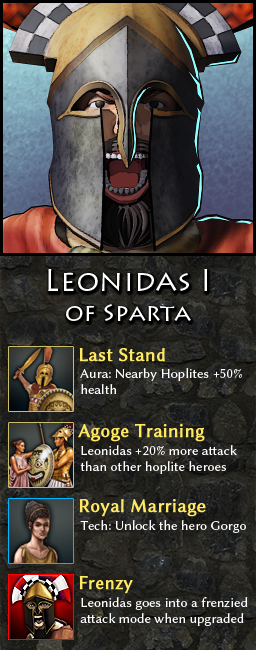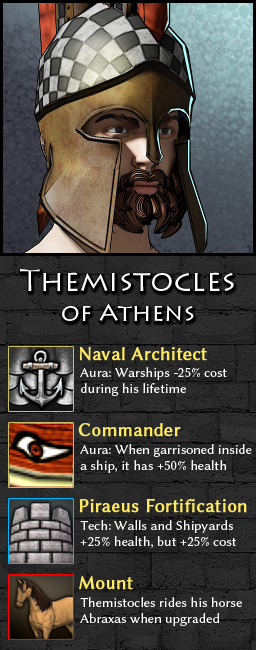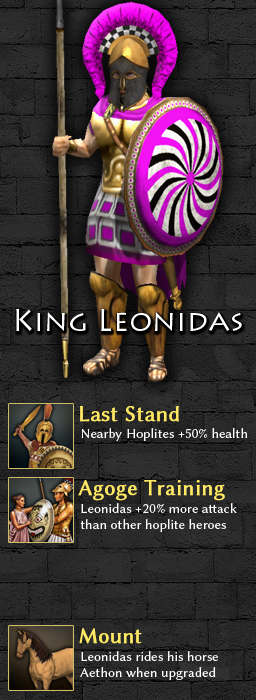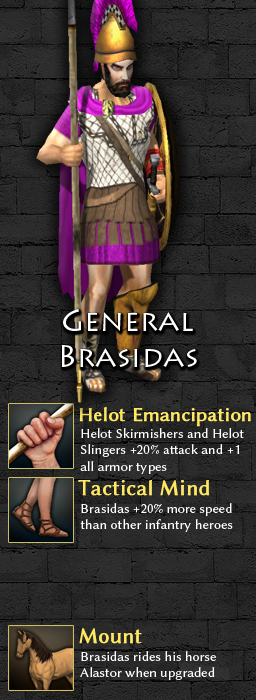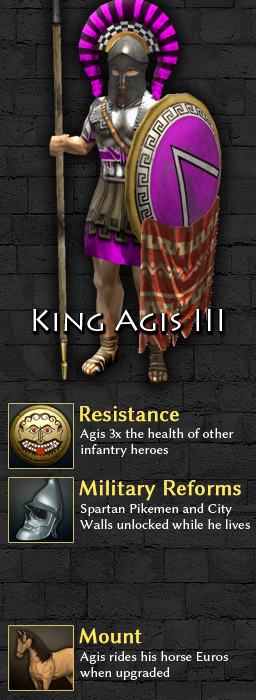Leaderboard
Popular Content
Showing content with the highest reputation on 2020-08-02 in all areas
-
3 points
-
In reality, Skiritai have spears, and fought as runners (ekodromos) but also could do a phalanx2 points
-
2 points
-
1 point
-
Yeah, but if at least 9 other ancient writers say the same thing, then it's strange to describe it as a figment of Polybius' mind. My personal opinion, it seems to me that Polybius' account is questioned because of the modern controversy, and not because the actual passage itself is questionable or problematic. African elephants are often depicted as being short of stature in art from Antiquity as well, so it's not just the ancient accounts, but also pictorial evidence that leads us to the conclusion that African (war) elephants were small. For myself, and I think Nescio as well, the main point of contention isn't whether they were small or not, but whether these elephants were (more closely related to small) bush elephants, or whether they were (more closely related to) forest elephants. Ironically, it would make little noticeable difference for the elephant models in-game. Most players wouldn't notice either way. We're really just nitpicking details here. Troglodytic, the adjective of Troglodytae, is a very generic term that simply refers to "cave dwellers", and simply refers to very primitive people as could be found in parts the Sahara or the Red Sea Coast. The term isn't even exclusively used for specific African peoples, see Strabo, who uses the term Troglodytae to refer to a tribe in Scythia Minor on the West Coast of the Black Sea... But the differentiation between Troglodytic and Ethiopian elephants in itself is indeed of notable interest. Basically differentiating between elephants from Sudan (Aethiopia) and those from Eritrea/Modern day Ethiopia. But why exactly? The coastal regions on the Red Sea from Sudan to Eritrea where the Ptolemies set up their bases weren't exactly far from each other... By the way, are you referring to the L. Casson (1993) article? I read it a short while back. It says that both species of elephants were found more or less throughout the continent including the lands of the Red Sea and Gulf of Aden during Antiquity (after Scullard), and that Philadephus' hunting parties almost certainly went after forest elephants (also referring to the consistency of ancient writers in describing the African elephants as smaller than the Indian ones, as an argument). Besides the people involved in the selection and hunt of these animals, I think that indeed most ancients in the Mediterranean would have been largely ignorant of the large bush elephants. Also, bush elephants are really difficult to handle... They're really stubborn and also have a penchant for killing their handlers... They can be ridden, but they're not really war-elephant material. Also, a pissed off bush elephant is just a really scary sight... I pissed one off one time in northern Ghana in a large nature reserve. I had wondered off by myself, and was standing by a creek when an elephant walked through the creek at barely 10 meters from me, and it hadn't noticed me because of the shrubs until it was standing almost directly in front of me.. He got startled and gave me a little heart attack too, but it just "growled" and went on with its day. A very short while later, another large elephant started mock charging me from across the creek... Another small heart attack ensued, but the big boy was just acting tough and didn't follow up on the charge. Of course, I did the only sensible thing a man can do in such a situation: take pictures : True. Though, sadly, I don't have access to the article (is it worth making an account there?)1 point
-
A generic peltophoroi could work as well for a better skirmisher unit. Or the original peltastes could be replaced by psilos or euzonos or akontistes, and the pelstates added as a better skirmisher. For the sword issue, anyway the system is broken and hardly justified so let's make a sword hoplite unit with the minimum effort and let's see if the system will prevail in the future.1 point
-
I agree. It's a super contentious subject since the 20th century. It's definitely not a new debate... I want to just point something out here that's quite important. The dismissal of the idea that African war elephants were smaller than Indian war elephants does not only require us to ignore Polybius' account, but actually requires us to ignore many other Greco-Roman accounts as well. I recently read: Again on the Elephants of Raphia: Re-examining Polybius' Factual Accuracy and Historical Method in the light of a DNA Survey, which agrees with the notion that the modern Eritrean elephants of Gash Barka are the same species as the ancient African war elephants, and basically says that Polybius mention of African elephants being smaller than Indian ones was a non-factual statement: https://research.ncl.ac.uk/histos/documents/2016AA08SchneiderAgainontheElephantsofRaphia.pdf What I actually found much more interesting than the article itself was the appendix, which includes many other ancient accounts which actually mention that Indian elephants were in fact larger than Libyan (African) elephants. It's not just Polybius. It was "common knowledge" in Antiquity that Indian elephants were the largest. Polybius' claim was readily repeated as well as complimented by other accounts, some pre-dating him: [1] Onesicritus, FGrHist 134 F 14 (and other authors) = Strabo 15.1.43. And both he and others state that they are larger and stronger than the Libyan elephants [μείζους δὲ τῶν Λιβυκῶν καὶ ἐρρωμενεστέρους ἐκεῖνός τε εἴρηκε καὶ ἄλλοι]. (Translation by H. L. Jones.)44 See also Strabo 15.1.22 (Onesicritus, FGrHist 134 F 22). [2] Megasthenes, Indika, FGrHist 115 F 4 = Diod. 2.35.4. It also breeds elephants both in the greatest numbers and of the largest size, providing them with sustenance in abundance, and it is because of this food that the elephants of this land are much more powerful than those produced in Libya [καὶ πλείστους δὲ καὶ μεγίστους ἐλέφαντας ἐκτρέφει, χορηγοῦσα τὰς τροφὰς ἀφθόνους, δί ἃς ταῖς ῥώμαις τὰ θηρία ταῦτα πολὺ προέχει τῶν κατὰ τὴν Λιβύην γεννωμένων]. (Translation by C. H. Oldfather.) Also see Diod. 2.42.1 = Megasthenes, fragment Schwanbeck 4 (‘The coun- try of the Indians also possesses a vast number of enormous elephants, which far surpass all others both in strength and size [ἔχει δ́ ἡ τῶν Ἰνδῶν χώρα πλείστους καὶ μεγίστους ἐλέφαντας, ἀλκῇ τε καὶ μεγέθει πολὺ διαφέροντας]’). [5] Diod. 2.16.3–4. For India is a land of unusual beauty, and since it is traversed by many rivers it is supplied with water over its whole area and yields two harvests each year; consequently it has such an abundance of the necessities of life that at all times it favours its inhabitants with a bounteous enjoyment of them ... It also has an unbelievable number of elephants, which both in courage and in strength of body far surpass those of Libya [ἔχει δὲ καὶ τῶν ἐλεφάντων ἄπιστον πλῆθος, οἳ ταῖς τε ἀλκαῖς καὶ ταῖς τοῦ σώματος ῥώμαις πολὺ προέχουσι τῶν ἐν τῇ Λιβύῃ γινομένων] ... (Translation by C. H. Oldfather.) [6] Livy 37.39.13 (the Roman battle line at Magnesia in 190 BC).46 They placed, sixteen elephants in reserve behind the triarii, for, in addition to the fact that they seemed unable to face the greater number of the king’s ele- phants—there were fifty-four of them—African elephants cannot resist even an equal number of Indian, whether because the latter are superior in size— for in fact they are far larger—or in fighting spirit [nam praeterquam quod multitu- dinem regiorum elephantorum—erant autem quattuor et quinquaginta—sustinere non vide- bantur posse, ne pari quidem numero Indicis Africi resistunt, sive quia magnitudine—longe enim illi praestant—sive robore animorum vin@#$%ur]. (Translated by E. T. Sage.) [7] Plin. Nat. 8.27. African elephants are afraid of an Indian elephant, and do not dare to look at it, as Indian elephants are indeed of a larger size [Indicum Africi pauent nec contueri audent, nam et maior Indicis magnitudo est]. (Translated by H. Rackham.) [8] Plin. Nat. 8.32. Elephants are produced by Africa beyond the deserts of Syrtis and by Maureta- nia; also by the land of Ethiopia and the Trogodytes, as has been said; but the biggest ones by India [Elephantos fert Africa ultra Syrticas solitudines et in Mauretania, ferunt Aethiopes et Trogodytae, ut dictum est, sed maximos India] ... (Translated by H. Rackham, slightly modified.) [9] Curtius 8.9.17. The strength of its [i.e. India] elephants is greater than those which men tame in Africa [Elephantorum maior est vis quam quos in Africa domitant, et viribus magnitudo respondet]. (Translated by J. C. Rolfe.) [10] App. BC 11.160 (the battle line at Magnesia). He gave the command of the left wing to Eumenes. Considering his African elephants of no use, being few in number and of small size, as those of Africa usually are (and the small ones are afraid of the larger [sc. Indian elephants]), he placed them all in the rear [τῶν δ ̓ ἐλεφάντων, οὓς εἶχεν ἐκ Λιβύης, οὐδένα νομίζων ἔσεσθαι χρήσιμον ὀλιγωτέρων τε ὄντων καὶ βραχυτέρων οἷα Λιβύων(δεδίασι δ ̓ οἱ σμικρότεροι τοὺς μείζονας), ἔστησεν ὀπίσω πάντας]. (Translated by H. White.) 11] Philostr. VA 2.12. The Indian elephants exceed those from Libya in size to the same extent as those exceed a Nisaean horse [ὅσον δὲ ἵππου Νισαίου μείζων ὁ Λιβυκὸς ἐλέφας,τοσοῦτον τῶν ἐκ Λιβύης οἱ Ἰνδοὶ μείζους]. (Translated by C. P. Jones.) [12] Servius Ad Georg. 1.57. India gives ebony. There are also elephants in Africa, but they are better in India. Hence Terence: ‘the man who was in charge of Indian elephants’, that is to say the biggest ones [‘India mittit ebur’ et in Africa fuerunt elephanti, sed meliores in India. hinc est quod ait Terentius ‘elephantis quem Indicis praefecerat’, id est maximis]. The article basically argues that all these authors either based their writing on each other, or were just repeating a commonly held, but mistaken belief during Antiquity that Indian elephants were the largest, and so, all these authors were actually mistaken and basically did not know what they were talking about. I disagree with this. I think it's pretty darning that there are so many ancient accounts in agreement on the idea that African (war) elephants were actually smaller. Even more darning is that I've never seen an account state the opposite, that African elephants were larger, even though someone must have noticed over the centuries, if they were indeed using large bush elephants that they actually tower above Indian elephants. I don't think that the use of larger African Bush elephants is credible in light of these accounts. The other 4 possibilities you (Genava55) mentioned are still a possibility of course. It's very much still an open question. But I think we can be relatively certain that these elephants were 1) African, and 2) small.1 point
-
Anyway, amateurs won't solve easily problems experts cannot. This is difficult to keep parsimony in one hypothesis when there is incentivisation for gameplay diversity and uniqueness. Moreover there is contradiction between current evidences and historical accounts for Ptolemaic war elephants. Several hypotheses can be drawn but none can be really ruled out neither proven correct: Polybius made up account or mistake. This is possible since it is not the first time there is made-up explanations in Polybius' work. So common bush elephants are still a credible hypothesis. Elephants from a population of Bush elephants being smaller because of selective pressure (see island effect / Foster's rule / Insular dwarfism). Younger bush elephants because they were easier to capture and to tame. Forest elephants from not clearly identified past ecosystems at the proximity of the Sahara. Unknown species or subspecies of "North African" elephants today extinct from which the Ptolemies gathered their war elephants. Clearly an issue arise with the relation between the Ptolemies and the Kushites, because there is a possibility they were using the same elephants (at least at some point).1 point
-
Btw according to this https://www.mozilla.org/en-US/firefox/78.0/releasenotes/ this latest esr version supports old MacOS this what you call lts.1 point
-
I have determined that heroes can have: 2 auras or abilities or special stats Auras can be ranged/localized or global Abilities/special stats can range from greater attack or speed for that hero, to what building they're trained at, to unlocking units or buildings 1 technology Each hero will unlock some kind of special technology specific to that hero 1 upgrade Example: Horse, Elephant, Berserker mode, heavy armor, something like this. Like "leveling up" your hero. City Phase Examples:1 point
-
1 point
-
You mod because it's awesome and people love your mod Meaning you've fixed it? @gameboy Do you still experience the error? (For I can't reproduce it.)1 point
-
1 point
-
The feature is called "turrets" and it's being worked on. I'm personally notsomuch interested in mounting and dismounting troops (way too much micro). My main thing is just allowing the soldiers in the tower to target nearby enemy soldiers independently from the main elephant attack. So imagine tasking your elephant to batter down a building while the archers on his back shooting at random nearby enemy soldiers.1 point
-
1 point



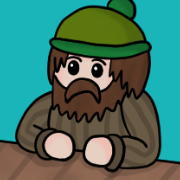

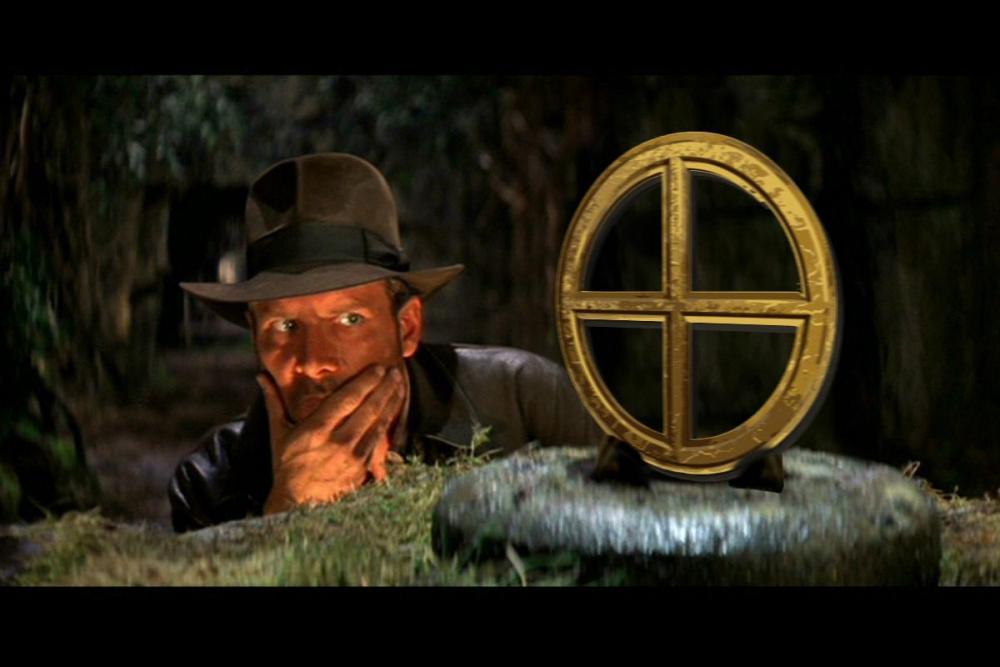

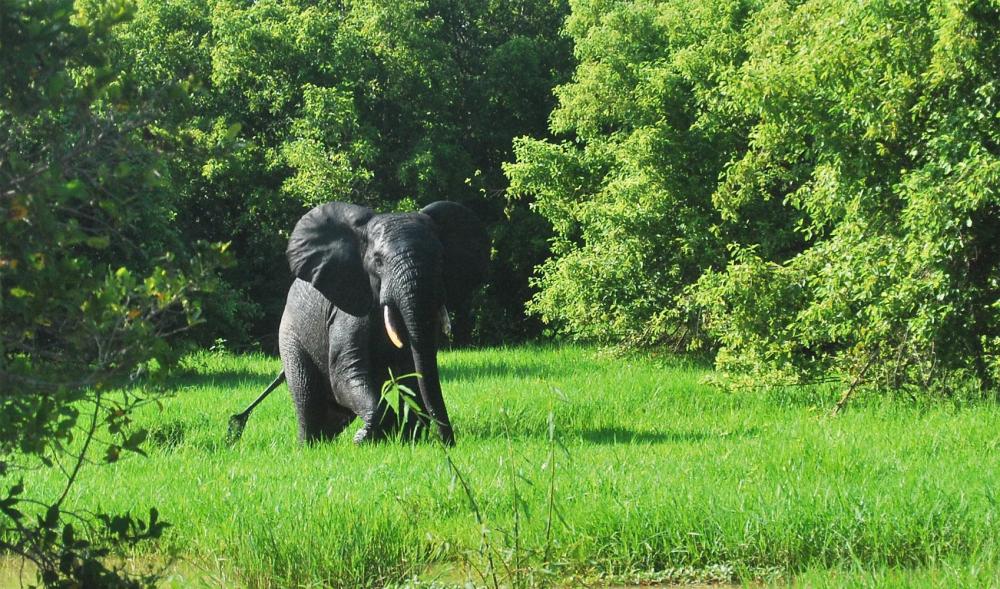
.thumb.jpg.b21ca1d0c15fb56b42c39b25a0a40815.jpg)
